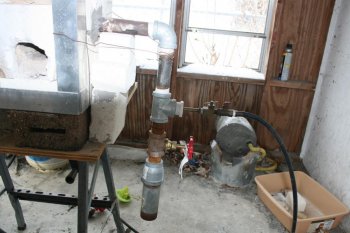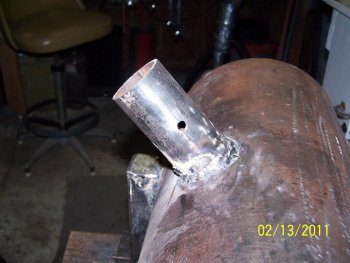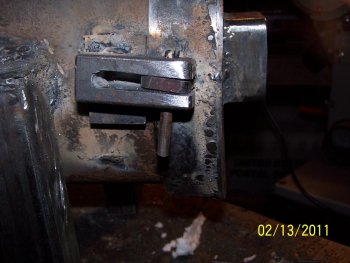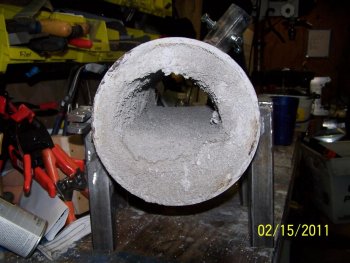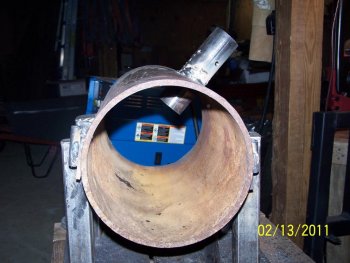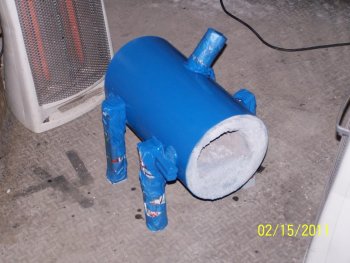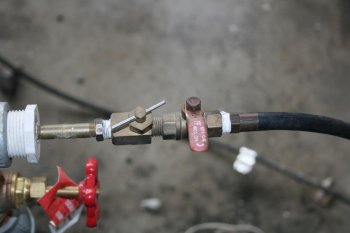Doug,
If you can't tell by now I'm easily confrused! I know the ball valve is the in-line shut off valve with the handle, I think mine is red. The gate valve is going to be attached to the blower (and I think it's used to adjust the amount of air flow), or the other way around, Blower then Gate Valve then 1 1/2" pipe to a bell reducer to a tee, w/bushing (for gas line)then to 1" pipe, a 90 degree elbow, then pipe, then a 45 degree elbow, then pipe to the forge.
Have you got a pic of the needle valve? I agree with the ball valve that is a necessity, for safety reasons, I have that planned, I haven't bought one yet, I thought about reusing the one on my old forge, but thought again. It's better to buy a new one, they don't cost much and I'm a little more comfortable having a new one. Also, I'm planning on keeping my old forge for the future, when I can hopefully (oneday) put on a Mini-hammer-in, that way I'll have an extra forge for folks wanting to do some hammerin'.
Back to the needle valve, I think I've seen one, but memory doesn't serve me well. How is it adjusted? I really do like the KISS method, as I don't want it to be over complicated if it can be avoided, I would rather stick to Ed's plan, I will be using this forge for forging, if I HT anything in it it'll be 1084, and that's only because I don't want to wait on my kiln, which is usually never! I might have HT'd one blade in my forge, my kiln is dead on, and since I haven't had a problem Ht'ing, I think it's best to not mess with it. BUT(!!!), if I do need the needle valve, I need to know what it is and where to get one, and how to operate it, so share away PLEASE!
Ed if your out there and have time to chime in, please do. If the needle valve is for adjusting temp and I only need to keep my temp around the recommended forging temp of the steel, is it necessary to add this part? I think that's the best way to ask this question. Please keep it simple, for my poor brain is maxed out as it is. (SHUT UP Murph! I know you had a Jar Head comment coming from that!! I'm kidding, you know I can take it. But don't forget I can dish out too!).
I know, I probably sound ignorant about this needle valve stuff, and honestly, I would have bought the Blown Gas Burner assembly that Ellis has for sale, IF he would have answered his freakin EMAIL!!! Yeah, I'm a little ticked about that, after I bought all the parts I knew then his price is very reasonable. I could not just order it without talking to him about it, I had some questions, and just wasn't comfortable without some communication. So keep the info coming guys and if anyone has any pics of the way this is set-up, please share.
I intended to get the new pics loaded last night, but I didn't get in from the shop until 11, I was pooped, I hit the hay, didn't even check email. I'll get them on tonight.
THANKS Doug, this information is helpful even if I don't end up having to have it, because this forge will probably be a prototype, there are some other features I would like to add to the next one, but I need to purchase a plasma cutter before I can do it. I have some good ideas for the legs that I couldn't do with a band saw, I tried, it wasn't happening! With the thickness of the steel I wanted to use, so I just went with square tubing for the legs on this one.
I've gotten a lot done since the last update, matter of a fact, it's almost done, I've got the refractory all mudded up and the first coat of paint on it. And since I'll be waiting on some more parts for a little while, it'll give it a lot of time to cure. Something I very happy about, the warnings I read about retained moisture in the refractory was scary, steam is some powerful stuff, I have total respect(call it fear if you want)for it. It should have at least a week to cure maybe more. I'm usually very paitent, especially when the outcome can make me one!
Here is another question I didn't think about until I decided to put this forge on a stand, I was planning on putting it on the work bench or building a cart for it. But I got an idea to make it where I can either put it on a stand or bench AND be able to mount it on a pedestal. The question is how high? I'm sure it has to do with my comfort level, but is there a recommended height based on how tall I am? Or maybe how short I am, something like the way you figure anvil height? I've considered making it almost chest high, but that really looks dangerous, that high would make the feet on it so wide I'd have difficulty putting it away when it wasn't in use, so I figured I'd go to the experts that have probably already addressed this question, so if you have any experience or ideas, I'm looking forward to hearing them, got to get back to work, Y'all have a wonderful day, Rex


